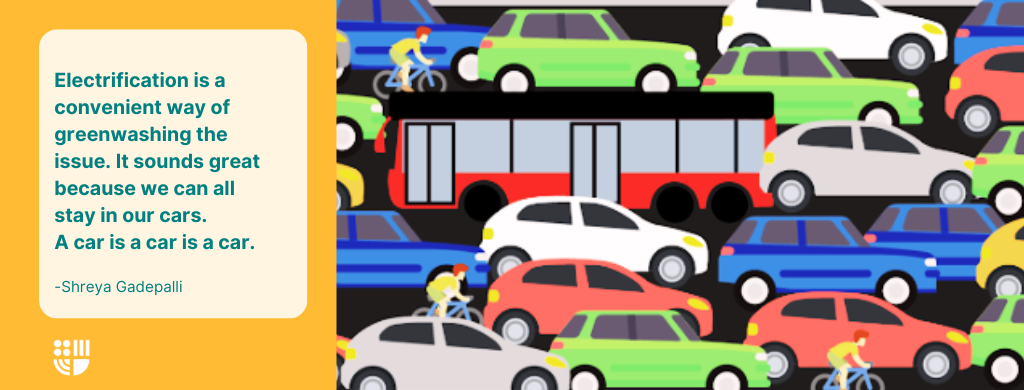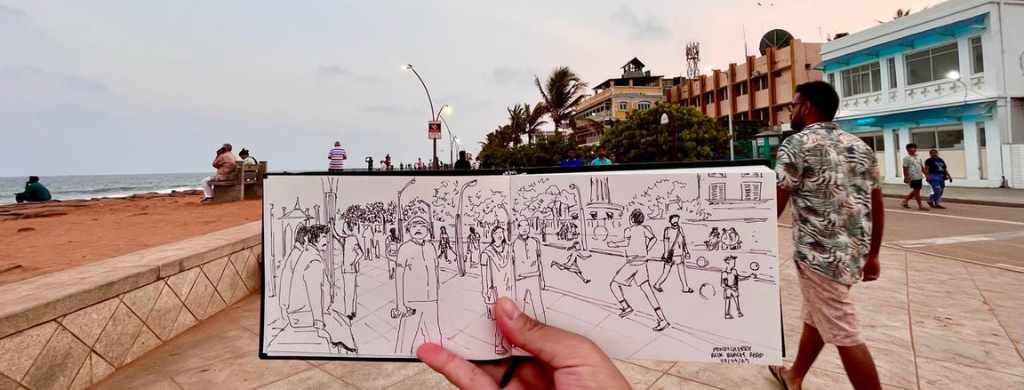By the time I was six, I knew how to cycle well. I was the proud owner of a little red roadster — a hand-me-down from the son of one of my dad’s colleagues. He had progressed to a bigger cycle, a roadster, too. (In the late 70s, you could get a roadster, a roadster, or a roadster! They just changed in size and colour.)
My love affair with cycles started with a challenge my grandmother posed. Could I cycle twenty rounds of the oval ground before our home? I would get a two-rupee note for each round. One, two, three, …ten, twenty, thirty, …fifty! That’s how many rounds I made on my little red roadster. And I became the proud owner of 50 mint-fresh two-rupee notes that I still treasure.
I cycled through high school on my mom’s royal blue 26″ Roadster. The cycle meant the freedom to go anywhere on my own.
At sixteen, I learned how to ride my dad’s scooter. But the object of my fascination was the Hawk, a sleek road bike by Hero. I got mine — a blue and yellow Hawk — with the first instalment of my monthly scholarship from IIT Delhi. But it had a twist. In place of the drop-down handlebars of a road bike, I got the shop to fix a mountain bike handlebar to give me a more upright seating posture! (The Hawk stayed with me till a decade ago when I passed it on to a kid in Surat. My mom’s blue roadster must also be somewhere in Gujarat. I donated it for earthquake relief in 2001).
After finishing my Master’s in Industrial Design in the late 90s, I had to decide what to do next. Most of my classmates found jobs in the automobile industry. I decided to take the path less travelled. The time had come to progress from bi-cycles to tri-cycles! As a young 23-year-old right out of college, I joined as the principal designer at the USAID-funded India Cycle Rickshaw Improvement Project in Agra. (I was not just the designer. I was also the office cleaner, the accountant, and the project manager!)
The cycle rickshaw was losing patronage mainly due to its antiquated design. The design hadn’t changed in over half a century. We aimed to transform it into a modern, twenty-first-century machine that passengers desired and drivers loved. In doing so, we hoped to shift trips from polluting diesel-run auto-rickshaws to a genuinely green mode to save the Taj Mahal from acid rain.
For the next two years, I lived in small quarters attached to a workshop in Agra, where I would develop designs and build prototypes of modern cycle rickshaws with my own hands. These prototypes had fancy names: Raja ki Baggi, Raani ki Palki, and Udan Khatola. I even created an electric-pedal-assist rickshaw — called Vigyan ka Samadhan — two decades before e-rickshaws became a thing. Each prototype was live-tested by cycle rickshaw drivers. Their feedback helped me refine the design.

I read Small is Beautiful by the German economist E. F. Schumacher. Inspired by his philosophy, I incorporated the principles of Appropriate Technology in my design of the modern cycle rickshaws; rather than requiring customised components — which would have increased the price — my design used readily available cycle parts. The redesigned rear body could be built by micro-enterprises locally with simple tooling.
The new rickshaws cost the same as the old-style rickshaws, but their maintenance cost dropped by 90%. Modern rickshaws were a third lighter and easier to drive. Passenger comfort improved significantly. Word started trickling: passengers loved the new rickshaws, and drivers earned 30–50% more each day because they could ride longer. Rickshaw assemblers, financiers, and fleet operators across North India started embracing the new designs. My training and assistance helped allay any concerns they had.

Despite being human-powered, these modern vehicles became known as CNG cycle rickshaws! In the early 2000s, auto-rickshaws shifted from petrol to CNG in Delhi. Hence the moniker. Rumour was that the design of the modern rickshaw came from Japan! When my friends proudly announced to their friends that I had designed these modern rickshaws, they would brush it off as a joke.
As a gift to my alma mater, I introduced cycle rickshaws in the IIT Delhi campus (which had none previously) through a cooperative of half a dozen drivers. If you visit the campus today, you can see a few dozen rickshaws shuttling people across the 300-acre campus.

Modern rickshaws have become the norm now across North India. Over half a million serve 4–5 million passengers daily and employ over a million people. Could I have asked for a more fulfilling start to my professional life?
My affair with tricycles did not stop with the modern Indian rickshaw. I had the opportunity to reimagine the Indonesian Becak (pronounced bay-chaak) — a rickshaw with passengers in the front rather than at the back. This variation posed some challenges, but I am always up for a new challenge!
The Modern Becak programme was also fun because I lived with, and fell in love with, a new culture, that of Central Java. To this day, I consider Yogyakarta my second home.
For the modern Becak, I devised a new suspension from broken motorcycle coil springs and car leaf springs that made the ride extremely comfortable — Appropriate Technology in action. An innovative steering mechanism made the modern Becak very easy to manoeuvre. The gripe of old Becak drivers was that these new Becak were so easy to drive anyone could become a Becak driver!

why doesn’t it have a modern becak.



By 2010, my focus shifted from designing human-powered vehicles to cycling-friendly cities. One of the first steps in this direction was creating the Better Streets Better Cities design guide, which has become the go-to resource for urban design students across India. Since then, I have guided multiple Indian cities and states on making cycling safe and fun for everyone. But the most ambitious cycling initiative I have developed thus far is the India Cycles4Change Challenge with the Smart Cities Mission of the Government of India.
The Cycles4Change Campaign was launched as a means to a green recovery from the COVID pandemic. Through this pathbreaking initiative, my team and I managed to kindle the interest of over a hundred Indian cities to reimagine themselves as cycling havens. While much needs to be done, Cycles4Change is a promising start to transforming Indian cities.

COVID rekindled my love affair with cycling. I got myself a roadster — a step-through variant — which has become my principal mode of transport since mid-2020. The cycle is the only vehicle I own. And cycling for me is not just a sport but daily transport.
This post was first published on medium.com. To access it, click here.
- Click to share on LinkedIn (Opens in new window) LinkedIn
- Click to share on Pocket (Opens in new window) Pocket
- Click to share on Pinterest (Opens in new window) Pinterest
- Click to share on WhatsApp (Opens in new window) WhatsApp
- Click to share on Telegram (Opens in new window) Telegram
- Click to share on Reddit (Opens in new window) Reddit




